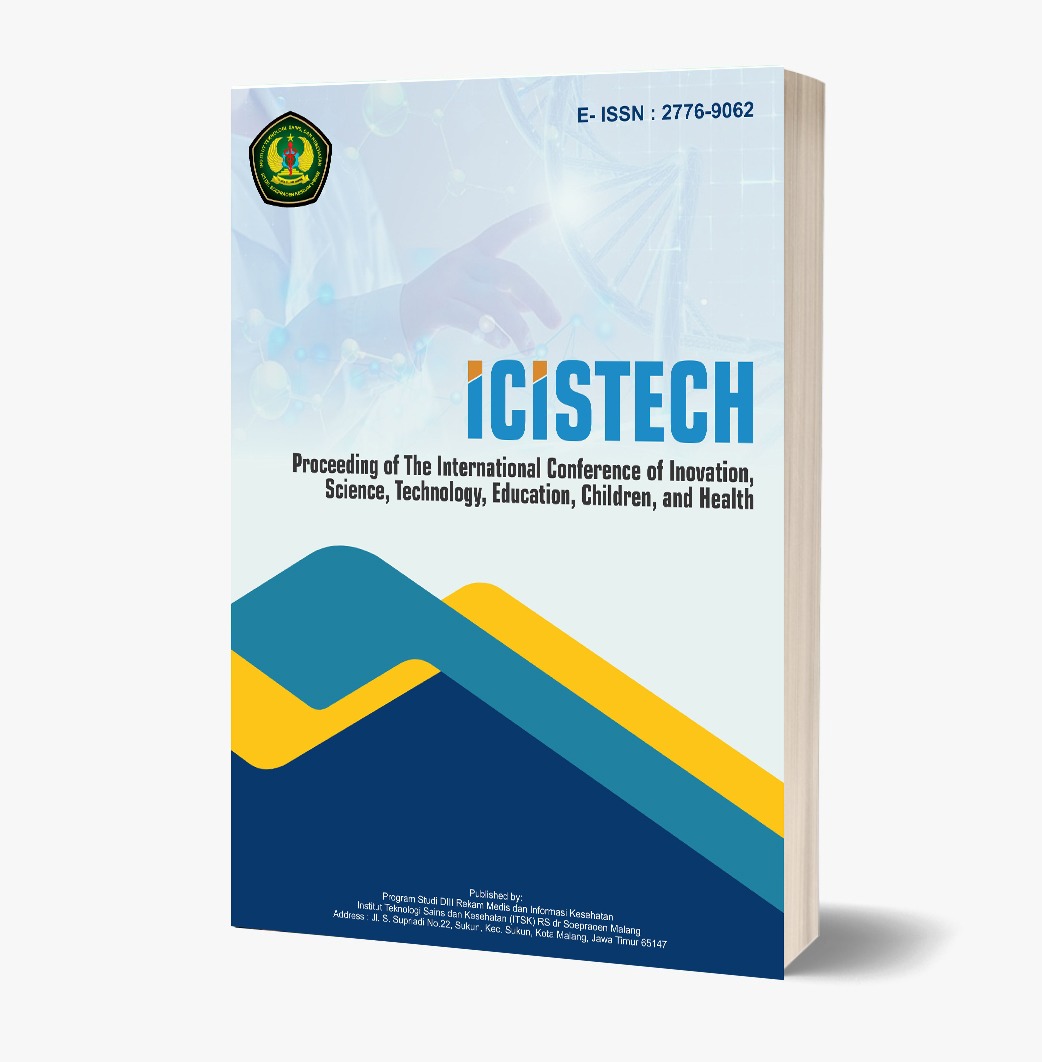Kinetic Sand Games To Overcome The Dependence Of Gadget Dependence On Children In Elementary School Age
DOI:
https://doi.org/10.62951/icistech.v4i2.91Keywords:
Kinetic sand layout, Gadget dependence, Elementary school age children.Abstract
The development of digital technologies such as gadgets has grown very rapidly in the last decade, which applications often do not determine the age range for users, especially for children. Today, parents are faced with the dilemma of letting their children use these modern gadgets, which often cause serious addiction or keep them in the dark and risk facing children who know nothing. These problems also occur in MI Miftahul Huda students in the Tulungagung Regency in East Java province. The research was conducted on February 20 to March 20, 2024. This research was only limited to one class, namely class 2 with the dependence of the gadget to be given an alternative game of kinetic sand. The design of this study uses experimental quasy with pre and post design tests. The population in this study were MI Miftahul Huda Pulerejo Tulungagung students who were dependent on gadgets that met the research inclusion criteria. The sample in this study were 23 respondents. The problem of gadget dependency data has a very high level, which will affect the development of children's social skills. For that, a suitable method is needed for analyzing it, the method that has been used is to use traditional games by playing with their peers. Another solution researchers will use the game of kinetic sand to overcome the problem of gadget dependence on children, which has benefits in playing kinetic sand such as for creativity and as a gathering place for socialization. The general objective is to play kinetic sand to develop social skills in children, while the specific goal is to find out whether kinetic sand is the right game tool to overcome gadget dependency problems in primary school-age children. The expected benefits are the proposer researchers can socialize the game of kinetic sand to teachers and guardians of students in elementary school so that after this study ends, the game of kinetic sand can be applied to students or children of primary school age. The plan of this activity will begin with 1) collecting academic data, distributing questionnaires to student guardians, 2) data analysis, 3) testing using kinetic sand games, 4) discussing the results of the trial. The output that will be carried out are scientific publications in accredited national journals or non-accredited national journals.
References
Maulida, O. H. (2013). Menelisik pengaruh penggunaan aplikasi gadget terhadap perkembangan psikologis anak usia dini. Fakultas Ilmu Pendidikan,Universitas Negeri Semarang, 1-5.
Manumpil, B., Ismato, Y., & Onibala, F. (2015). Hubungan penggunaan gadget dengan tingkat prestasi siswa di SMA Negeri Manado. Ejoural Keperawatan (e-Kep), 3(2), 1-6.
Mubashiroh. (2013). Gadget, penggunaan dan dampak pada anak-anak. Fakultas Ilmu Pendidikan, Universitas Negeri Semarang, 1-8.
Nawangsari, G. (2016). Traditional games intervention effectiveness for children with internet addiction. Asean Conference 2nd psychology & humanity (pp. 729733). Malang: Universitas Muhammadiyah Malang.
Olivia, F. (2013). Gembira bermain corat coret. Jakarta: Elex Media Komputindo.
Peterson, K. (2016, Juni Thursday). 5 Benefits of sand play for children. Retrieved Juni Minggu, 2017, from Kims counseling corner: http://www.kimscounselingcorner.com/playtherapy/usingsandencourage-childswellnessdevelopment
Rufaida, N., & Muhammad, R. (2013). Penerapan bermain pasir untuk meningkatkan kemampuan motorik halus pada anak kelompok A TK yunior Surabaya. Paud teratai, 2 (1), 1-10.
Syahran, R. (2015). Ketergantungan Online Game dan Penanganannya. Jurnal Psikologi Pendidikan & Konseling, 1(1), 8492.
Soewito, B., & Isa, S. M. (2015). Digital technology: the effect of connected world to computer ethic and family. CommIT (Communication and Information Technology) Journal, 9(1), 23-28.
Virgawati, V. (2015). Pengaruh penggunaan pasir berwarna sebagai media pembelajaran terhadap perkembangan kognitif (pengenalan sains) anak usia 3-4 tahun di Paud Permata Bunda Kabupaten Sragen. Jurnal penelitian pendidikan, 32 (1), 82101.
Widiawati, I., Sugiman, H., & Edy. (2014). Pengaruh penggunaan gadget terhadap daya kembang anak. Jakarta : Universitas Budi Luhur.
Yildirim, C., & Correia, A. P. (2015). Exploring the dimensions of nomophobia: Development and validation of a self-reported questionnaire. Computers in Human Behavior, 49, 130-137.
Downloads
Published
How to Cite
Issue
Section
License
Copyright (c) 2024 Proceeding of The International Conference of Inovation, Science, Technology, Education, Children, and Health

This work is licensed under a Creative Commons Attribution-ShareAlike 4.0 International License.













